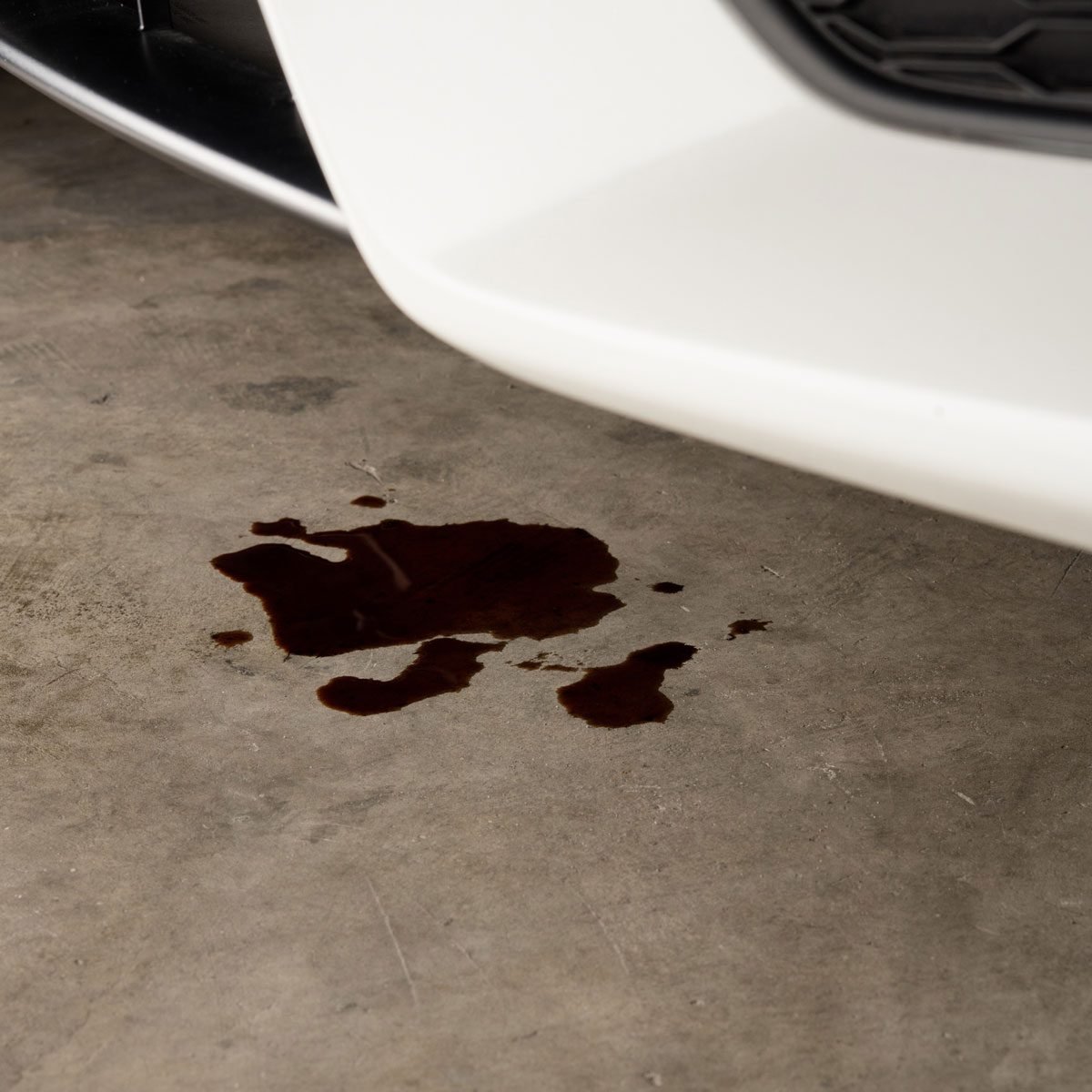Whether it's a couple of drops or a big puddle, ignoring an oil leak can quickly lead to expensive engine damage.

Why Is My Car Leaking Oil?

There are multiple reasons why cars leak oil. Losing too much oil too quickly can seriously damage your engine, so it’s vital to deal with this problem ASAP.
On This Page
What Can Cause an Oil Leak?
The main reasons for oil leaks are failed engine gaskets and worn O-rings and seals that shrink and harden due to age, heat and pressure. That produces the perfect environment for an oil leak. The oil pan drain plug, oil filter or rocker (valve) cover gaskets are the most likely culprits, so let’s look at these and other possible reasons why a car might be leaking oil.
The most common cause of gasket and seal failure is lack of maintenance. Going too long between oil changes causes oil to break down, allowing old oil to become contaminated from condensation and combustion by-products. Once saturated with contaminates, acids develop in the oil. These acids attack and degrade gaskets and seals, leading to oil leaks. Always have any leak checked out by your mechanic. Repairing leaks will save you from costly repairs down the road.
Gaskets, Seals and O-rings
Gaskets and seals are designed to keep oil in your engine where it belongs, while keeping out dust, dirt and moisture that lead to oil breakdown and premature engine damage.
These gaskets and seals will leak oil if they fail. Here’s where you’ll see the leaking oil:
- Rocker (valve) cover gaskets: Look for dirt and gunk buildup at the top of the engine and small puddles of oil around the cylinder head indents and spark plugs. Also check for oil spots or drip stains under the center of the engine, as well as a burning oil smell. These leaky gaskets are a common cause of an oil leak and are easy to identify and repair yourself.
- Front and timing cover gasket and seal: You’ll see oil leaking from the front or center of the engine.
- Front main seal, timing cover gasket or seal: When these seals or gasket fail, you’ll see oil slung all over the drive or timing belt.
- Rear main oil seal: If the top of the engine is dry, you’ll see oil dripping from between the engine and transmission, and the flywheel is covered in oil. In this case, removing the transmission inspection cover is necessary to confirm the leak.
- Camshaft seal: Located at the rear of the cylinder head, a bad camshaft seal will leave oily residue below the rocker cover.
- An oil pan gasket: This gasket can leave drops anywhere under an engine, which means diagnosing a bad oil pan gasket can be tricky. Oil from just about any other leaking engine gasket or seal will drip over the oil pan. It’s important your mechanic verifies the leak is from the oil pan gasket and not just oil from a different source.
- Oil filter adapter mounting gasket: If you see oil dripping from the oil filter area, check the filter and the filter mounting adapter gasket. Over-tightening can not only damage the oil filter gasket, it can damage the adapter gasket as well.
- Head gasket; Although rare, a head gasket can cause an external oil leak and is often misdiagnosed as a rocker cover or camshaft seal leak. More likely, you’ll see white smoke coming from the tailpipe signaling coolant from a bad head gasket is burning in the combustion chamber.
- Dip stick tube O-ring: A dip stick tube that is loose, wobbly or cracked can result in a significant oil leak. If your dip stick is loose, or its mounting bracket is broken or missing, make it a priority to get it repaired so that you can check your oil.
Other Causes of Oil Leaks
- Oil pressure sending unit. Oil sending units can commonly cause a slow leak or, because they are screwed directly into the engine’s oil pressure system, a gusher. A telltale sign that an oil sending unit is failing will be the oil light flashing, or erroneous oil pressure readings. On newer cars, a bad sending unit can send false low oil pressure data to the engine computer, which in turn will shut off the engine for no apparent reason.
- Oil pan: The oil pan can leak if road debris or driving over a curb has caused a puncture.
- Oil pan drain plug: Over-tightening the oil pan drain plug or oil filter during an oil change can crush the gaskets, creating a gap for oil to leak out. Over-tightening the oil pan drain plug can also strip the threads on the drain plug. Replacing the drain plug is a simple fix, although you may need all new oil. However, if the threads inside the oil pan are stripped, then you’re looking at a costly repair.
- A bad, stuck or clogged PCV valve: This can cause all kinds of headaches. One is increasing internal engine pressure, which results in the failure of one or more engine O-rings, gaskets or seals.
Poor Installations
- Improper part installation: If you over-tighten and crush a gasket, or if you don’t tighten bolts tight enough or in the correct sequence, those gaskets and bolts can leak oil.
- Oil filter “double gasket”: This is a common mistake that happens when replacing an oil filter. The old filter gasket sticks to the engine, and the new filter and gasket are installed on top of the old gasket. This often results in catastrophic engine oil loss.



















